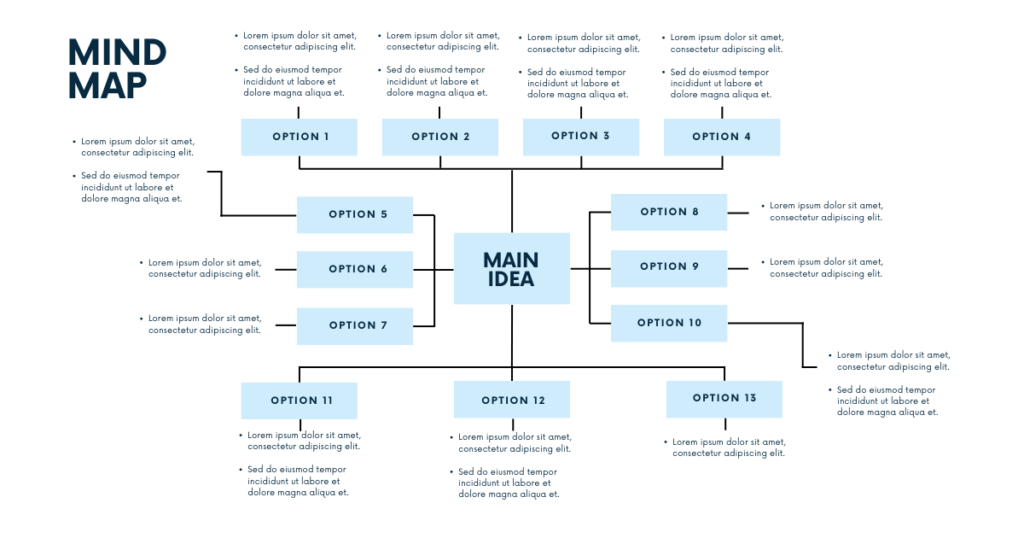Disclaimer
If you have a website, you already know how important it is to get traffic. But what if you need help attracting visitors to your site? This course will show you how to get traffic to your website.
We’ll start by covering the basics of search engine optimization (SEO), including keyword research and on-page optimization. Website optimisation for search engines is covered in detail. The search engines so that your pages appear higher in the search results.
Next, we’ll dive into paid traffic methods like Google Ads and Facebook Ads. You’ll learn how to create effective ad campaigns that drive traffic to your website and convert visitors into customers.
We’ll also cover other traffic methods like content, social media, and email marketing. You’ll learn how to create content that attracts visitors to your site, use social media to promote your content and engage with your audience, and build an email list that drives traffic to your site.
You will finish this course with a comprehensive understanding of getting traffic to your website using free and paid methods. You’ll be able to create a traffic strategy that works for your business and helps you achieve your goals.
Introduction to Website Traffic Methods
All ok, howdy,
I’ll be discussing six quick and easy strategies you can use immediately to start seeing more visitors to your website. Using these strategies, we increased one of our blogs’ page views from around 100 per day a year ago to over 5,000 per day now. Another of our blogs had a twofold increase in readership within a few months thanks to the methods I shall detail below.

Let’s go into the specifics now. Consistent free traffic to my YouTube channel and blogs is crucial to my ability to pay for my family as a full-time blogger and affiliate marketer. That’s why, after leaving my previous career, I dedicated myself to developing my internet profile and learning all I could about driving visitors to my site. This post will detail the strategies that have helped me in the past, and I do not doubt that they will do the same for you.
I decided in 2016 to educate myself entirely on the topic of traffic generation while I was working as a banker in Australia. I’ve learned a lot about attracting visitors to websites and blogs, and I’d want to share what I’ve learned with you today. When people watch my videos, one of the most common things they want to know is, “Greg, how can I get more traffic to my website?” I’ve included some easy strategies in this post that may help you do that.
The so-called “golden keyword ratio” is a simple way to boost website traffic. This approach is easy to grasp and apply but may have profound effects. I’ll explain how to implement it and why each step is crucial.
First, let’s check out some travel-related terms. The terms “best beach” and “best beaches” may be entered into our chosen keyword tool. Using Ahrefs’ “Keyword Explorer” has convinced me it’s the best tool. The next step is using the golden keyword ratio after compiling your list of keywords.
High-volume, low-competition keywords comprise half of the “golden keyword ratio.” The sweet spot is 70 percent low-competition keywords and 30 percent high-volume search terms. Look for keywords with a Keyword Difficulty (KD) of 20 or less to locate them. As a result, getting ranked higher for these terms is less of a challenge.
Use these low-competition keywords in your article’s title, meta description, and body text for the best results. If you do this, you’ll have a better probability of rising search engine ranks and gaining more natural visitors to your site.
Using the golden keyword ratio to target the proper keywords may significantly increase website traffic. This strategy may boost your website’s organic traffic and search engine rankings.
The next step is to check whether the keyword phrase includes at least five terms we’ve already eliminated. We have also screened for a keyword difficulty score of, at most, 7, in the third phase.
Next, determine how many times the primary keyword phrase was searched for relative to how many times it was found in Google’s search results (the “golden keyword ratio”).
Suppose we select the key phrase “best beaches in Thailand.” We need to discover complementary search terms to aggregate their combined search volume. The next step is to take the absolute number of Google searches for “best beaches in Thailand” and divide it by the total number of relevant search results.
Generally, a decent golden keyword ratio is around 0.25, which indicates that the term is worth your time and effort to rank for. Keeping to this ideal keyword ratio can increase the likelihood of targeting keywords with a manageable search volume and competitiveness combination.
Significant since it provides information about the degree of rivalry around a specific keyword combination. To rank higher for a search term, the fewer results there are, the better. With just 48 sites sharing these same terms in their titles, we have a keyword with minimal competition and strong potential.
Combining the results of the “all in title” search with other metrics (such as search volume, keyword difficulty, etc.) can help You choose the search terms that will bring in the most customers to your website.
Or blog.
Divide the total number of monthly searches by the total number of results for all titles, and check that the resulting value is 0.25 or less. Based on the sample we just went through, let’s assume that the monthly volume for “best places to eat in West Palm Beach” is 500. The result is 10.4 if 500 is divided by 48 (the total number of titles returned). As a result, we should keep searching for alternative keywords with a better ratio since the golden keyword ratio for this term is not 0.25 or below.
In conclusion, the golden keyword ratio is a strategy for identifying search terms with low levels of competition and great potential for search engine rankings. To improve our chances of ranking higher in search engine results and attracting more visitors to our website, we need to choose keywords with low volume, long-tail keywords with low keyword difficulty, and a low number of all-in-title results.
Many sites are vying for this search term. According to the golden keyword ratio, if we divide the total number of eligible results (3) by the total keyword volume (200), we obtain 0.015, much less than the required value of 0.25. Because of this, “best places to live in South Carolina near the beach” is a keyword with a good chance of ranking well and bringing in the kind of visitors you’re looking for.
The golden keyword ratio may help you uncover keywords with low competition and great potential, which can increase your site’s traffic and ranks. Targeting low-ratio keywords in your content can improve your position in search engine results and draw in additional readers
interested in your niche.
The way is about the best beaches in Santa Barbara, and they click the link to visit my website; if they land on my page and immediately hit the back button without reading the article or clicking any other links on my site, that is considered a bounce and the bounce rate is the percentage of visitors who bounce off of your site without taking any action, so in this case, my bounce rate was relatively high at 88.14, which means that the vast majority of my visitors left my site without reading the article or clicking any other links on my site.
I took a few measures to lower the page exit rate. As a first step, I double-checked that the blog post’s title was descriptive. This ensures that site visitors will be aware of the situation and satisfied when they finally reach the page. Second, I diversified the page’s visuals by including additional pictures and videos. This is useful for maintaining the interest and attention of site visitors. Finally, I made it easy for users to move about my site by linking to other sections with pertinent information.
As a result of making these adjustments, my page’s bounce rate dropped from 88.14% to 78.06%. This meant that people spent more time on my site, reading my material, and converting somehow, such as by subscribing to my email list or clicking on any of my affiliate links. Improving user engagement, boosting page views, and drawing in more visitors are all possible outcomes of lowering the site’s bounce rate.
Reduce the percentage of visitors immediately leaving your site by raising the average number of pages they see while on your site. Increasing your website’s traffic and income may be accomplished by strategically placing internal links inside the content.
That has much effect because the content needs to be thick enough to fulfill the user’s search. In contrast, my Bora Facts article is nearly 2,000 words long and contains a wealth of data on the subject. This enhances my article’s search engine rankings since it closely matches the user’s search intent. If you want more people to visit your website, make the material as long as your page-one rivals. By doing so, you’ll better meet the user’s expectations and rise in the search rankings.
Coherence, or the degree to which your content addresses all the points that Google sees as essential to the primary search query. You’ll be able to rank higher for a wider variety of keywords and boost your chances of making it into the first page of search results for relevant phrases. Using LSI keywords shows Google that your content is well-rounded and of high quality, which in turn can improve your search engine rankings.
Five ways to boost website traffic include revising previously published content. Even excellent website content can become stale as new information becomes available or trends shift. You can keep your information fresh and valuable for your viewers by changing it often. By showing Google that you are actively maintaining and expanding your site, you may boost your ranks by updating older content.
In conclusion, you can increase your website’s visibility and attract more visitors to your site by following these five ways to increase website traffic:
- Optimizing your website for search engines
- Promoting your content on social media
- Creating long-form content
- Using LSI keywords
- Updating old articles
Always stay abreast of the most recent developments and best practices in SEO and digital marketing, and prioritize creating high-quality content that caters to the demands of your audience.
You did a fantastic job of capturing the article’s essential themes. In summary, the report outlines four strategies for boosting website traffic.
Use long-tail keywords throughout the text to improve your website’s search engine rankings.
Use social media and other channels to publicize your site and attract readers.
Make content that is longer and more in-depth than your rivals.
You should use LSI keywords and structured data to improve your content’s visibility in search engine results.
Producing material accessible to search engines and
enjoyable to read is stressed throughout the text. It also emphasizes the value of including structured data like headers and tables in your content to boost its visibility in search engine results and drive more visitors to your site.
The post offers helpful advice for increasing your site’s traffic and profile.













One Response